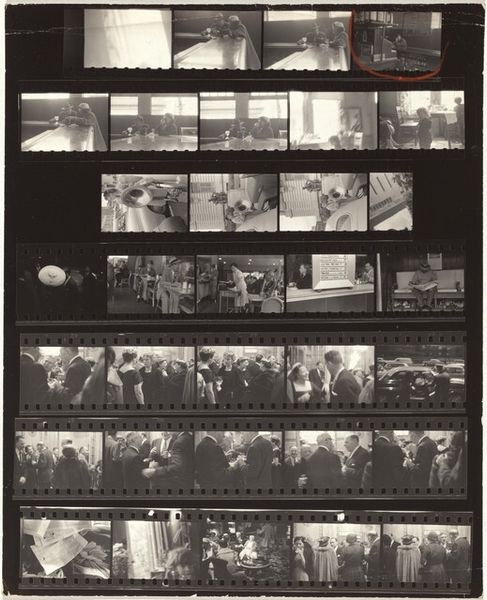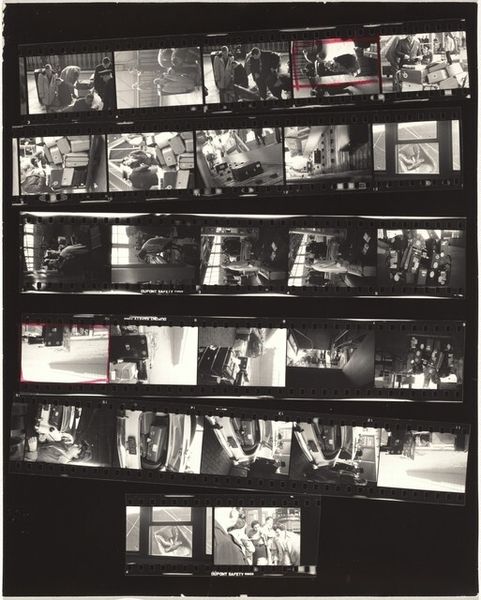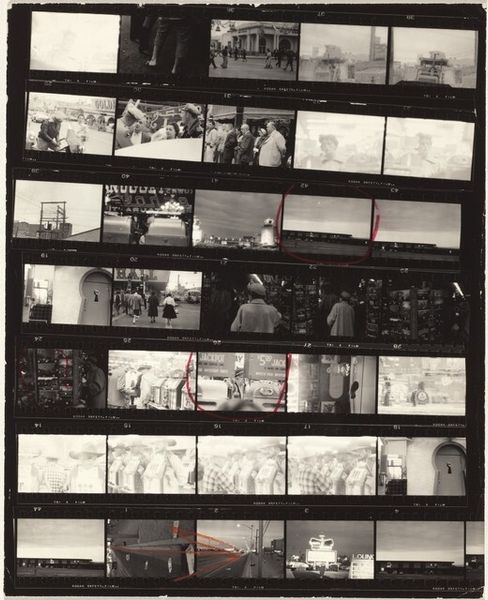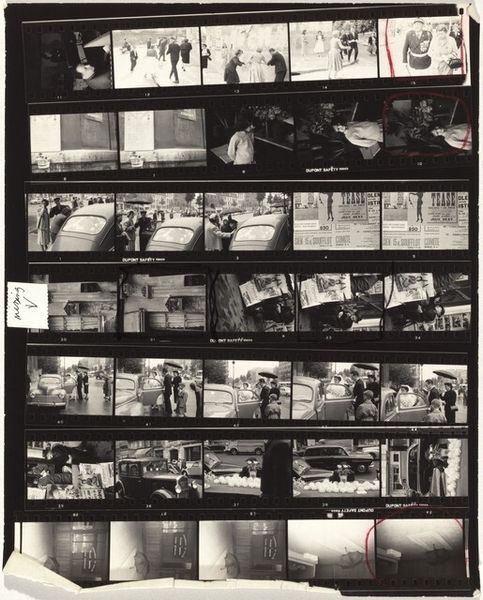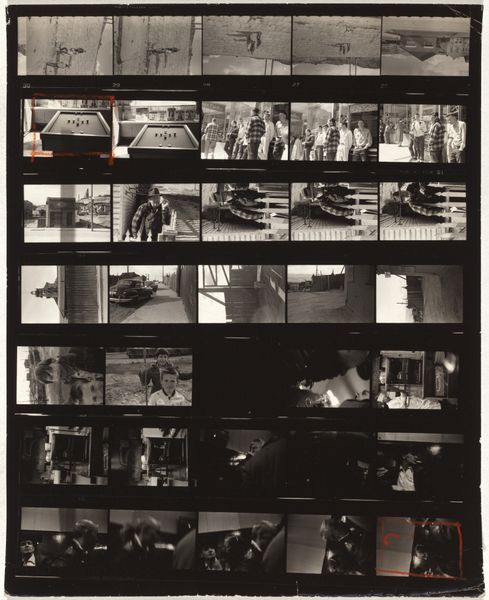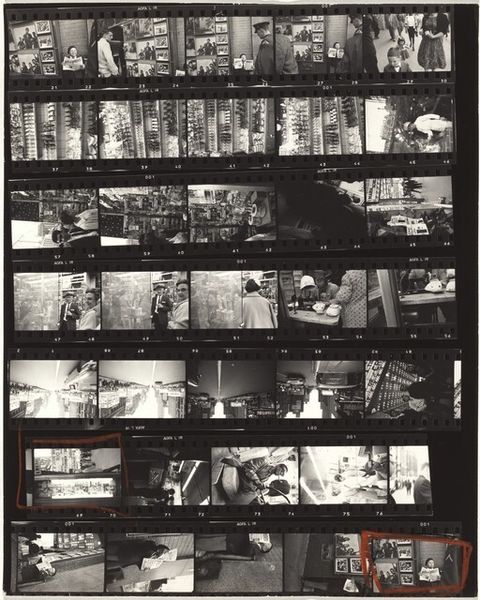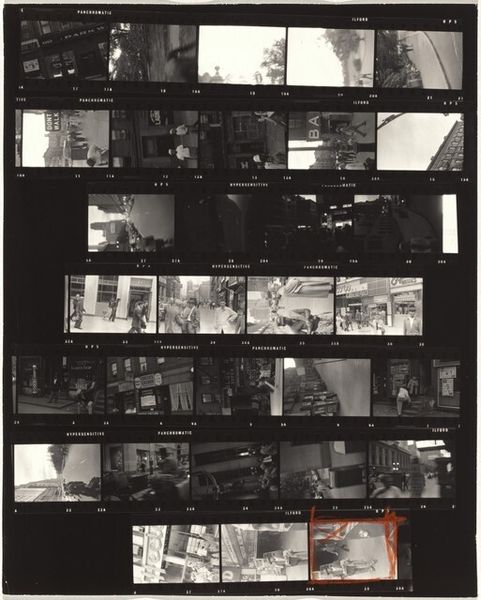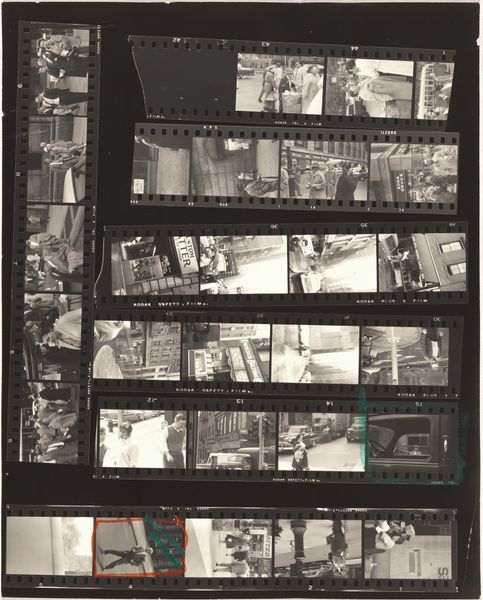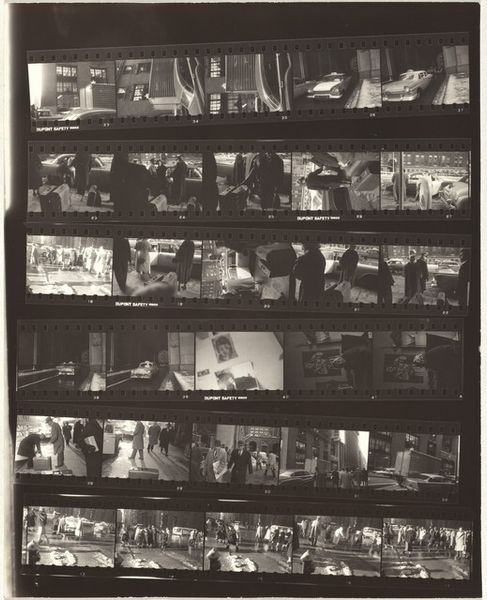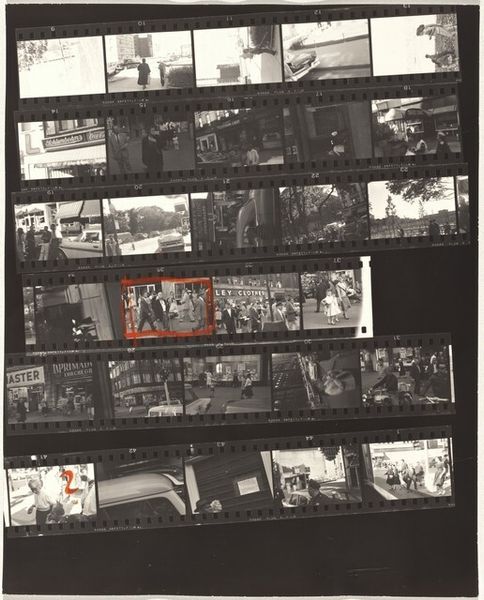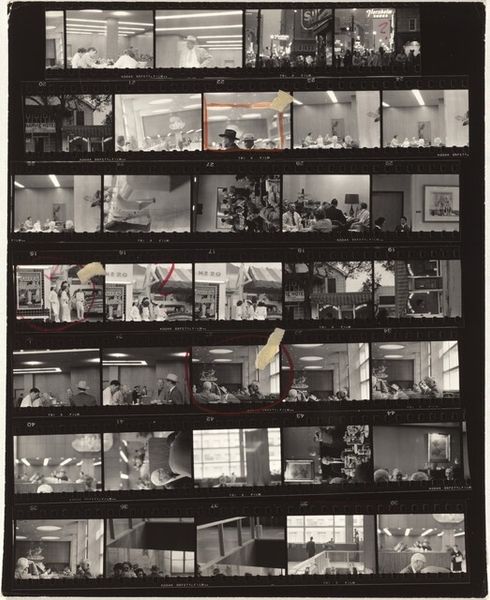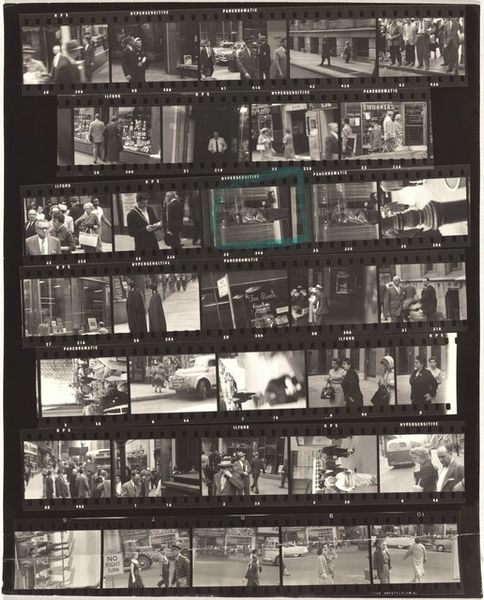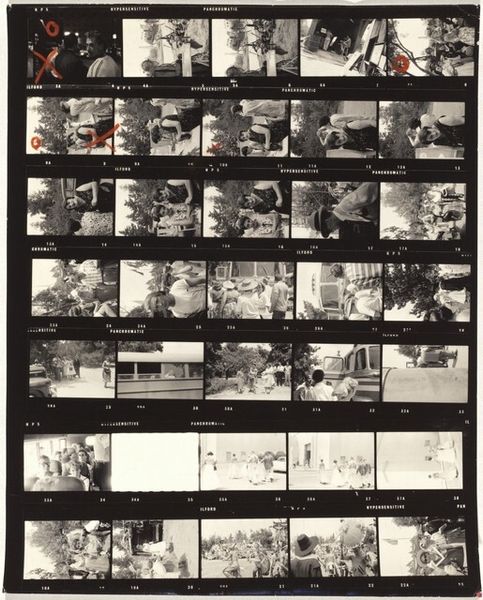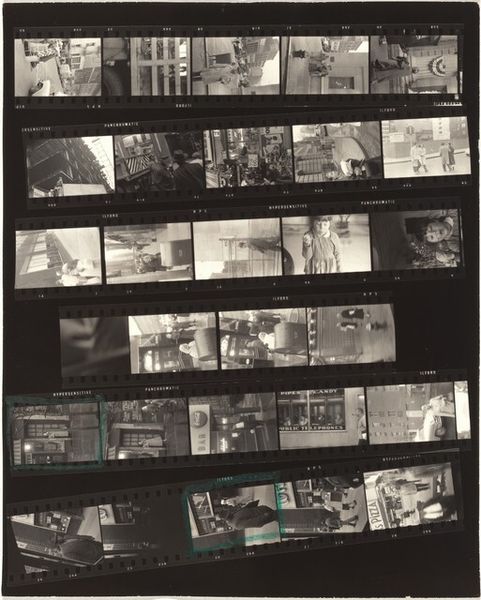
photography
#
film photography
#
social-realism
#
street-photography
#
photography
#
culture event photography
#
visual diary
#
film
Dimensions: overall: 25.2 x 20.2 cm (9 15/16 x 7 15/16 in.)
Copyright: National Gallery of Art: CC0 1.0
Curator: This is Robert Frank’s "Guggenheim 693—Butte, Montana" taken in 1956. What are your initial thoughts looking at this contact sheet? Editor: My first impression is that it feels fragmented, raw. A behind-the-scenes glimpse into the process of capturing fleeting moments. Curator: Absolutely. Frank's methodology involves this kind of rapid capture, a style he developed during his Guggenheim Fellowship. He presents an unflinching look at America, different from the promoted image. What stands out to you materially? Editor: Well, seeing the entire film strip emphasizes the material aspect of photography itself. The sprocket holes, the frame numbers, even the Kodak safety film markings, highlight the mechanics, the tangible, almost industrial process behind the creation of these images. This sheet exposes all the material steps, even those that are omitted in the selection process. Curator: Precisely. It reminds us that photography is a constructed reality, not just a mirror. This approach revolutionized documentary photography. Frank critiqued social structures, focusing on everyday life—isolation, inequality—using stark contrast and unconventional framing to reflect this sense of unease and dissonance. Editor: That unease resonates, even now. Seeing the selection process via red markings, makes me wonder what exactly determined a worthwhile image. I like how his photos are sequenced—a crowd staring, a street scene… it hints at narrative through the act of framing itself. Curator: Yes, these groupings point toward underlying social themes. By the 1950's, America presented itself as a nation of unparalleled prosperity and happiness, and Frank dares to counter such vision, highlighting the working class. He’s pointing toward the cracks in the American Dream. Editor: It is a powerful way to expose reality using humble materials—film, camera, streetscapes. The mundane made monumental through vision and critical intent. Curator: Indeed. By choosing what and how to expose, and later frame it, Frank's contact sheet provides a deep reflection on photography's role in shaping perceptions. Editor: A potent reminder that art isn’t just inspiration; it's conscious, constructed work, utilizing accessible tools and materials.
Comments
No comments
Be the first to comment and join the conversation on the ultimate creative platform.
